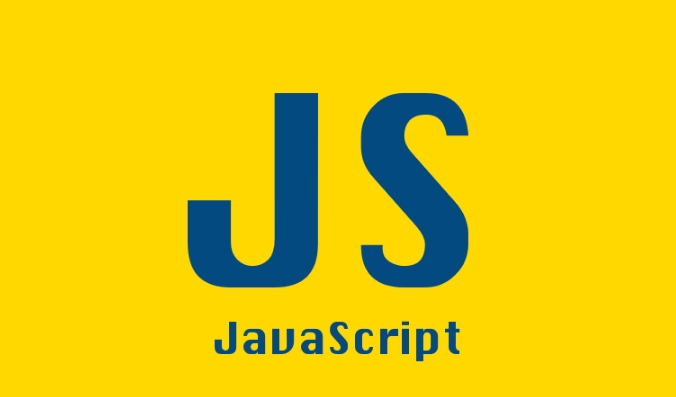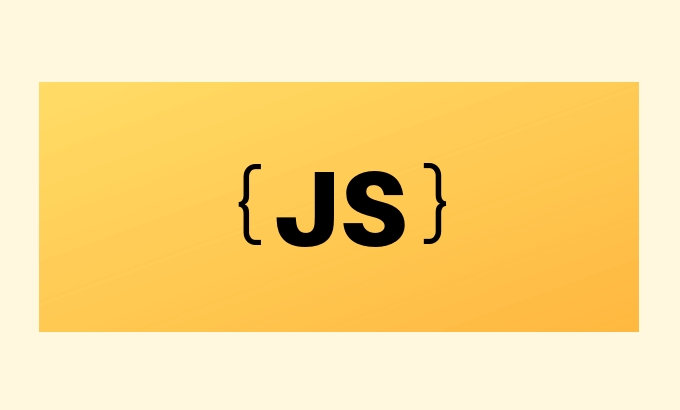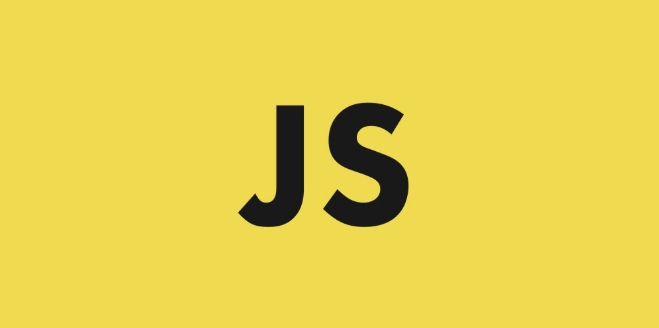How to implement a stack or queue in JavaScript?
Jul 13, 2025 am 02:31 AMImplementing stack and queues mainly rely on arrays in JavaScript. 1. The stack uses push to stack and pop to stack to achieve last-in first-out; 2. The queue uses push to queue and shift to queue to realize first-in first-out; 3. The queue can also be implemented in reverse; 4. It is recommended to encapsulate it into classes for reuse and management, such as the Stack class includes push, pop, peek and isEmpty methods; 5. The array implementation is simple and direct, but performance issues need to be paid attention to, especially shift operations may affect efficiency.

Implementing stacks or queues in JavaScript is actually not difficult. The key is to understand their characteristics and choose the appropriate data structure to simulate. JavaScript arrays are born with stack and queue capabilities, and can be used with just a little restriction.

Implementation of Stack
The stack is a "last in first out" structure. The most common way is to use arrays to match push and pop methods.
const stack = []; stack.push(1); // stack.push(2); console.log(stack.pop()); // Output 2
- push() : push the element to the top of the stack
- pop() : Pop an element from the top of the stack
Note: Although
unshift()andshift()can also be used to simulate the stack, it will operate on the beginning of the array, and the performance is poor and is not recommended.
If you want to view the top element of the stack without popping up, you can access stack[stack.length - 1] .
Queue implementation
Queues are the structure of "first in first out" (FIFO, First In First Out). It can also be simulated using arrays, but it needs to be combined with different methods.

const queue = []; queue.push(1); // join queue.push(2); console.log(queue.shift()); // Dequeue, output 1
- push() : Add element to the end of the queue
- shift() : Remove the element of the head of the team
Note: Frequent use of
shift()will cause the space in front of the array to be freed up and the internal needs to be re-indexed, which will have a certain impact on performance. If you have high performance requirements, you can consider implementing an object-based or linked list-based queue structure yourself.
In addition, you can also use unshift() and pop() to implement the queue in reverse, such as:
queue.unshift('a'); queue.unshift('b'); console.log(queue.pop()); // Output 'a'
This method is to dequeue from the end of the array and is suitable for certain specific scenarios.
Use class encapsulation more clearly
If you want the code structure to be clearer and more convenient to reuse, you can encapsulate the stack or queue into classes:
class Stack {
constructor() {
this.items = [];
}
push(item) {
this.items.push(item);
}
pop() {
return this.items.pop();
}
peek() {
return this.items[this.items.length - 1];
}
isEmpty() {
return this.items.length === 0;
}
}Similarly, you can write a Queue class to centrally manage the logic, so that it is easier to debug or extend functions in the future.
Basically that's it. Using arrays to implement stacks and queues is the most common practice in JavaScript, which is simple and direct. As long as you pay attention to the use order and performance characteristics of the method, most of the needs can be met.
The above is the detailed content of How to implement a stack or queue in JavaScript?. For more information, please follow other related articles on the PHP Chinese website!

Hot AI Tools

Undress AI Tool
Undress images for free

Undresser.AI Undress
AI-powered app for creating realistic nude photos

AI Clothes Remover
Online AI tool for removing clothes from photos.

Clothoff.io
AI clothes remover

Video Face Swap
Swap faces in any video effortlessly with our completely free AI face swap tool!

Hot Article

Hot Tools

Notepad++7.3.1
Easy-to-use and free code editor

SublimeText3 Chinese version
Chinese version, very easy to use

Zend Studio 13.0.1
Powerful PHP integrated development environment

Dreamweaver CS6
Visual web development tools

SublimeText3 Mac version
God-level code editing software (SublimeText3)

Hot Topics
 Compare complex data structures using Java function comparison
Apr 19, 2024 pm 10:24 PM
Compare complex data structures using Java function comparison
Apr 19, 2024 pm 10:24 PM
When using complex data structures in Java, Comparator is used to provide a flexible comparison mechanism. Specific steps include: defining the comparator class, rewriting the compare method to define the comparison logic. Create a comparator instance. Use the Collections.sort method, passing in the collection and comparator instances.
 Java data structures and algorithms: in-depth explanation
May 08, 2024 pm 10:12 PM
Java data structures and algorithms: in-depth explanation
May 08, 2024 pm 10:12 PM
Data structures and algorithms are the basis of Java development. This article deeply explores the key data structures (such as arrays, linked lists, trees, etc.) and algorithms (such as sorting, search, graph algorithms, etc.) in Java. These structures are illustrated through practical examples, including using arrays to store scores, linked lists to manage shopping lists, stacks to implement recursion, queues to synchronize threads, and trees and hash tables for fast search and authentication. Understanding these concepts allows you to write efficient and maintainable Java code.
 PHP data structure: The balance of AVL trees, maintaining an efficient and orderly data structure
Jun 03, 2024 am 09:58 AM
PHP data structure: The balance of AVL trees, maintaining an efficient and orderly data structure
Jun 03, 2024 am 09:58 AM
AVL tree is a balanced binary search tree that ensures fast and efficient data operations. To achieve balance, it performs left- and right-turn operations, adjusting subtrees that violate balance. AVL trees utilize height balancing to ensure that the height of the tree is always small relative to the number of nodes, thereby achieving logarithmic time complexity (O(logn)) search operations and maintaining the efficiency of the data structure even on large data sets.
 In-depth understanding of reference types in Go language
Feb 21, 2024 pm 11:36 PM
In-depth understanding of reference types in Go language
Feb 21, 2024 pm 11:36 PM
Reference types are a special data type in the Go language. Their values ??do not directly store the data itself, but the address of the stored data. In the Go language, reference types include slices, maps, channels, and pointers. A deep understanding of reference types is crucial to understanding the memory management and data transfer methods of the Go language. This article will combine specific code examples to introduce the characteristics and usage of reference types in Go language. 1. Slices Slices are one of the most commonly used reference types in the Go language.
 Hash table-based data structure optimizes PHP array intersection and union calculations
May 02, 2024 pm 12:06 PM
Hash table-based data structure optimizes PHP array intersection and union calculations
May 02, 2024 pm 12:06 PM
The hash table can be used to optimize PHP array intersection and union calculations, reducing the time complexity from O(n*m) to O(n+m). The specific steps are as follows: Use a hash table to map the elements of the first array to a Boolean value to quickly find whether the element in the second array exists and improve the efficiency of intersection calculation. Use a hash table to mark the elements of the first array as existing, and then add the elements of the second array one by one, ignoring existing elements to improve the efficiency of union calculations.
 Full analysis of Java collection framework: dissecting data structure and revealing the secret of efficient storage
Feb 23, 2024 am 10:49 AM
Full analysis of Java collection framework: dissecting data structure and revealing the secret of efficient storage
Feb 23, 2024 am 10:49 AM
Overview of Java Collection Framework The Java collection framework is an important part of the Java programming language. It provides a series of container class libraries that can store and manage data. These container class libraries have different data structures to meet the data storage and processing needs in different scenarios. The advantage of the collection framework is that it provides a unified interface, allowing developers to operate different container class libraries in the same way, thereby reducing the difficulty of development. Data structures of the Java collection framework The Java collection framework contains a variety of data structures, each of which has its own unique characteristics and applicable scenarios. The following are several common Java collection framework data structures: 1. List: List is an ordered collection that allows elements to be repeated. Li
 PHP SPL data structures: Inject speed and flexibility into your projects
Feb 19, 2024 pm 11:00 PM
PHP SPL data structures: Inject speed and flexibility into your projects
Feb 19, 2024 pm 11:00 PM
Overview of the PHPSPL Data Structure Library The PHPSPL (Standard PHP Library) data structure library contains a set of classes and interfaces for storing and manipulating various data structures. These data structures include arrays, linked lists, stacks, queues, and sets, each of which provides a specific set of methods and properties for manipulating data. Arrays In PHP, an array is an ordered collection that stores a sequence of elements. The SPL array class provides enhanced functions for native PHP arrays, including sorting, filtering, and mapping. Here is an example of using the SPL array class: useSplArrayObject;$array=newArrayObject(["foo","bar","baz"]);$array
 Learn the secrets of Go language data structures in depth
Mar 29, 2024 pm 12:42 PM
Learn the secrets of Go language data structures in depth
Mar 29, 2024 pm 12:42 PM
In-depth study of the mysteries of Go language data structure requires specific code examples. As a concise and efficient programming language, Go language also shows its unique charm in processing data structures. Data structure is a basic concept in computer science, which aims to organize and manage data so that it can be accessed and manipulated more efficiently. By in-depth learning the mysteries of Go language data structure, we can better understand how data is stored and operated, thereby improving programming efficiency and code quality. 1. Array Array is one of the simplest data structures







